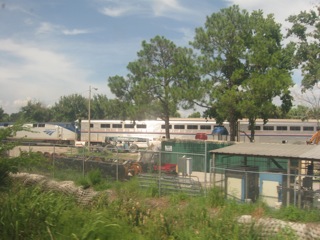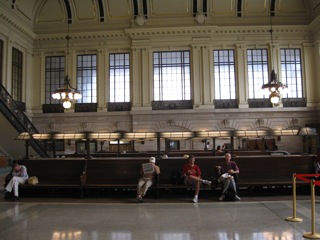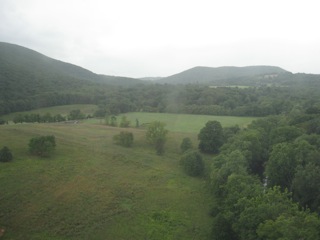|
The Everglades as seen from US 41 between Miami
and Marco Island
|
|
The northbound Silver Meteor prepares to begin
its journey at the Miami Amtrak station located in Hialeah Yard
|
|
Weeds are all that is left of the old ACL/SCL/Amtrak
passenger station in Sanford
|

The northbound AutoTrain as seen from the northbound Silver Meteor in Sanford |
|
The Affinia Manhattan Hotel as seen from the front
of Penn Station
|

The attractive lobby of the Affinia Manhattan Hotel |
|
Madison Square Garden as seen from the front of
the Affinia Manhattan Hotel. The entrance to Penn Station is just to
the right of this view.
|

Hoboken Terminal still wears a classic look |

Inside Hoboken Terminal |

The ornate ceiling inside Hoboken Terminal |

Manned ticket windows at Hoboken Terminal |
|
Looking across the Hudson River toward New York
City
|
|
The view at the Glen Rock Boro Hall stop
|
|
The village center at Ridgewood
|

The station at Allendale |
|
Eric Harms enjoys the views of the line to Port
Jervis
|

The valley below Moodna Viaduct |

The view from the opposite side of Moodna Viaduct |

A view behind the train crossing Moodna Viaduct |

Inbound train # 78 passes near Otisville |
|
Mountains envelop the Port Jervis commuter train
platform
|

Train # 80 pulls into the Port Jervis "station" to begin the journey to Hoboken |